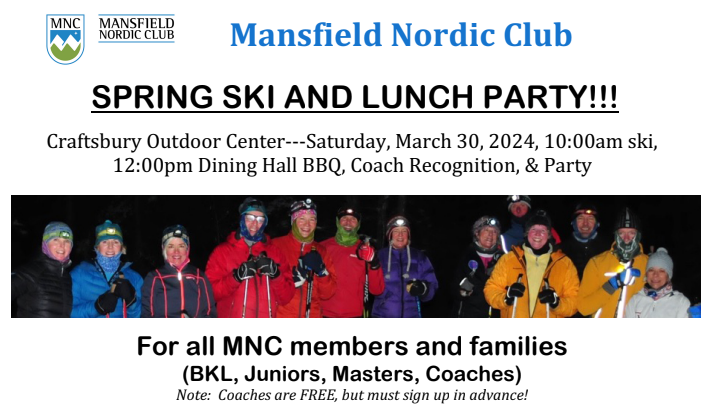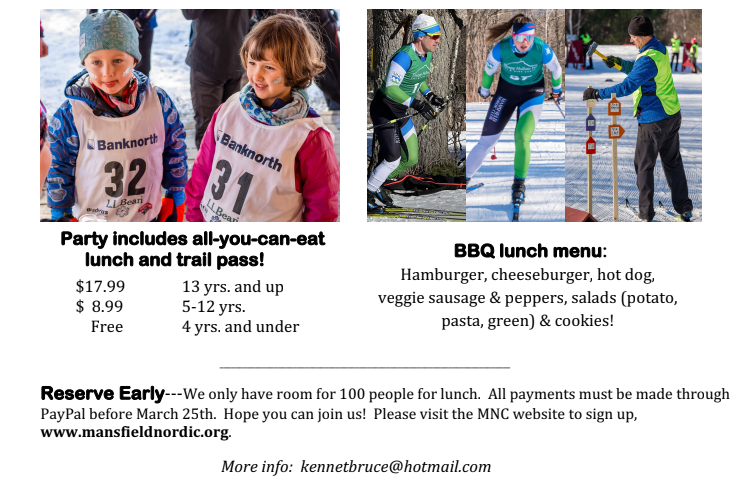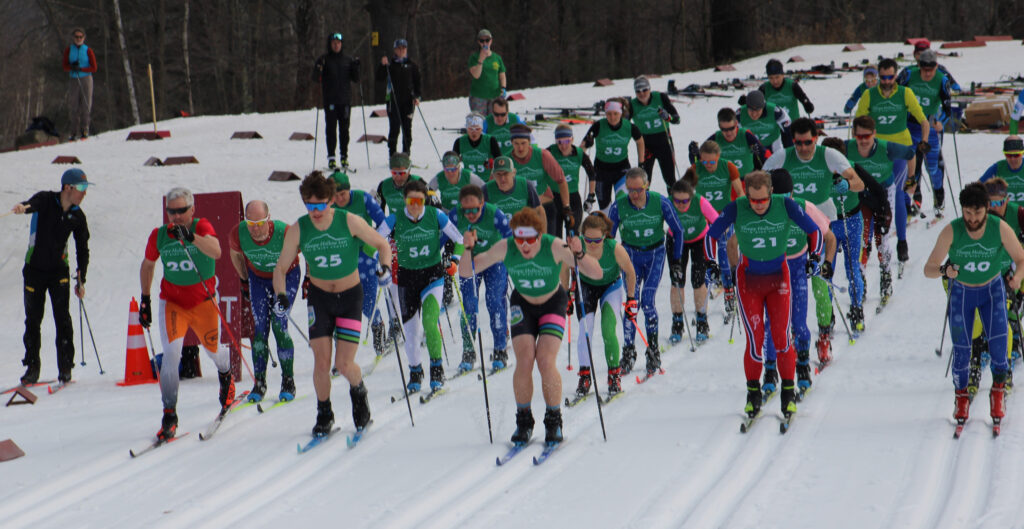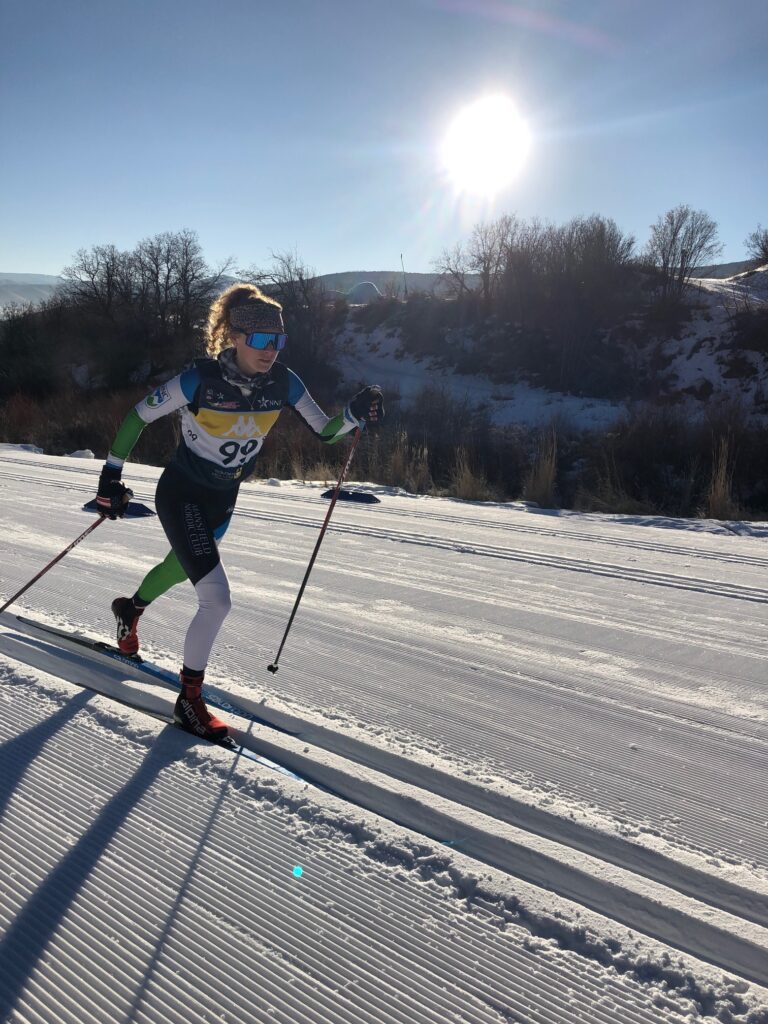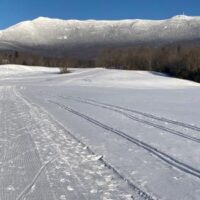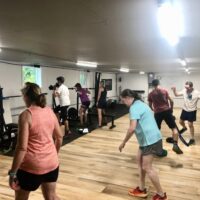After what felt like nothing but flooding and fires in 2023, the new year kicked off with snow and cold temps…and things really dropped down low in Lake Placid over the weekend.
With an overnight low of around -7 on Friday, it was one of those race mornings where the jury had to meet and decide if the races needed to be delayed or cancelled. But the thermometer was on our side. Faces were taped, pants and jackets were doubled-up, and lots of cold glide wax went into making bases shiny and speedy in snow that could at times feel like sandpaper.
This was the second classic sprint of the Eastern Cup season, and just like Waterville our crew showed they can really ski this technique! Whether warm and slushy/icy, or cold and snowy, MNC is on top of their game. In the qualifier we had several standout performances, including Anders slotting into 12th overall which was incredibly impressive given this was a full Supertour field. On the women’s side, Kate got in there with a 27th overall, meaning she’d be lining-up with only a few other Junior athletes and, primarily, against top Supertour athletes from teams like APU, BSF, Craftsbury, and Sun Valley!
In the Junior and U16 heats we had a large contingent of MNC racers: Virginia, Elsa, Greta, Julia, Nico, Niko, Jonah, Brooke, Astrid…that’s a lot of races throughout the day.
Just because someone didn’t make the heats didn’t mean they skied poorly: it was really interesting to have a classic sprint in both of these first EC weekends, because it meant I was able to watch several in our group quite literally get better at the format simply by gaining the experience and having another go. For example Stella was oh-so-close to making the Junior heats and only one spot off, 4 seconds back. That’s compared to Waterville when she was thirteen spots off, 13 seconds back. There are many, many races happening out there beyond just those head-to-head heats!
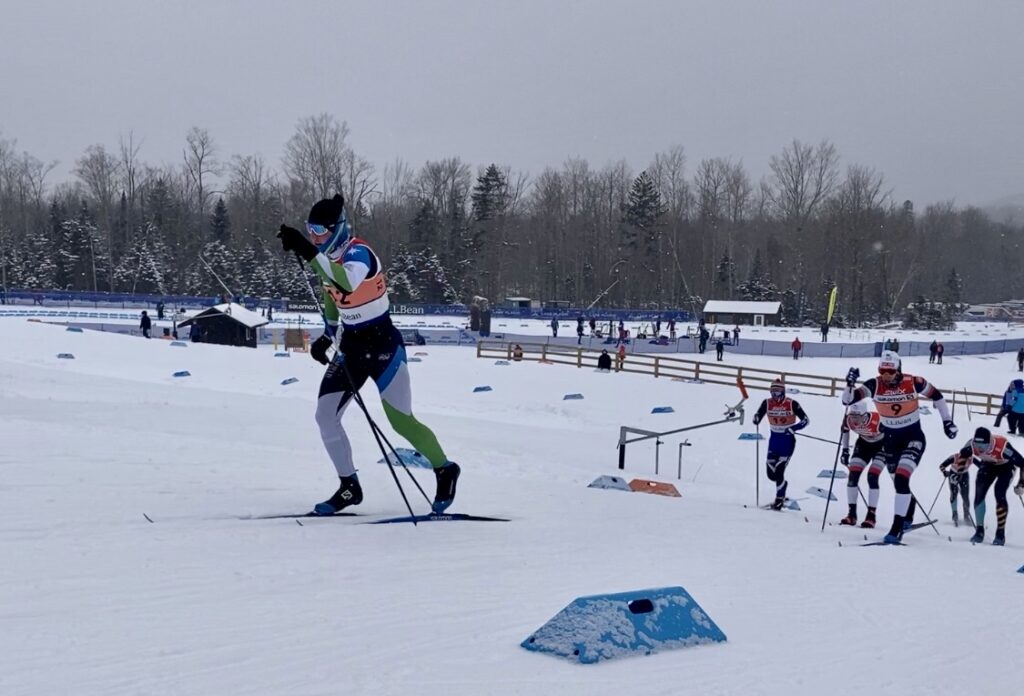
Anders leading his quarterfinal heat
When we got down to the rounds themselves, it was an amazing day for MNC. Helping us out was local Jericho-based event announcer Pete Davis, who may have just a sliiiight MNC bias, but nonetheless found himself announcing all sorts of MNC action since our skiers kept moving through the rounds and making waves!
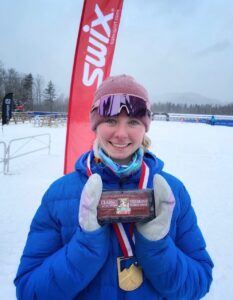
“Podium cheese” for Kate, just like on the World Cup!
Anders ended the day as the top U18 men’s racer, Kate ended the day as the top U16 women’s racer, and Jonah ended the day as the top U16 men’s racer. Three age group victories in a single race? That is certainly a new record for the club. To continue the impressive trend, Greta skied through the U18/U20 heats to take the win in those rounds, meaning we had four MNC skiers atop podiums throughout the day.
Although not everyone advanced, our group raced really well in the head-to-head rounds. On Tuesday and Thursday nights, our group is quite large…to the extent that I tried to coordinate with Coach Liz and Coach Rosemary about blocking off certain trails at the Range so that we could do intervals without overwhelming the BKL and Masters groups. But there’s probably something to be said for getting good at navigating skier traffic, dodging crashes, and staying light on your feet among many other athletes all vying for space!
Sunday was…surprise surprise, another cold day! This time everyone geared-up for a mass start on New England’s toughest course. There’s no way around it, this thing is designed for international competition and it shows. Watching NCAA races here last year and seeing the best college racers in the country literally torn apart by these hills was something else.
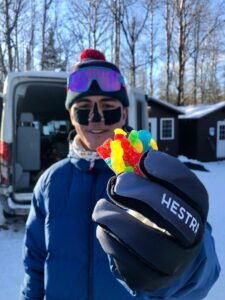
A possible secret to Lorenzo’s success: Sour Patch Blob
But as coaches often can be heard telling athletes when anything tough presents itself: “it’s the same for everyone out there.” and this held true. Things got going with the open women’s race, and it was great to see some MNC skiers putting up their strongest efforts yet this season. Elsa had a really great day, skiing transitions with power and making time all over the course to spend most of the race a handful of seconds and critically out-of-reach of a pack of charging Juniors behind her. Moving up a ton from her start position was Paige, who through her consistent cross country running career (she’s committed to SLU for XC running next fall!) used her combo of great aerobic ability and ski skills to charge up through the field.
The men’s race started off with a bang, or rather a snap/crash/crack as a gigantic pileup took place right under the first bridge. Wouldn’t be mass start racing without a little chaos. Anders made good on his strong distance classic race in Utah and delivered another strong performance with a 3rd-place U18 showing in this tough field. With his best showing yet, Lorenzo had a great race to put to rest some doubts the previous day he was having about his form and ability. It is always good to remember that so much can change in any direction on a race weekend, and it’s so rare that every race is just the best day possible. It all adds up over time!
Just like sprint day, there were highs and lows. I think one aspect of Eastern Cups and brutal courses is the compounding of any little thing being off…at this level, it does not take much for one small hindrance to really snowball, and it’s again a reminder that taking one weekend in a vacuum doesn’t necessarily define a month, a season, or a career. There will be more big races, more small races, more short races, and more long races.
In the U16 races the start corral chaos was limited, but MNC did suffer a few mid-race crashes that could’ve been much worse were it not for our tough and stalwart athletes. Kate and Mia went down pretty hard on the “cannonball run” downhill, but shook off the snow (and according to Kate, gradually remembered where she was and what she was doing there after such an epic near-blackout crash) and charged back through the field.
While those charges were happening, fighting up ahead was Brooke in the midst of a battle for the podium with some Canadian and American skiers alike. On the last climb Brooke hung tough in 4th place, and then made the pass in the long straightaway finish stretch to take her first Eastern Cup podium! This was super impressive for a number of reasons, but one of them may go unnoticed on paper. Brooke is the middle school State Champ 2 years in a row now, and you’d obviously assume her strengths lie in the climbs. There’s no doubt this helped her stay in touch with the pack and near the front given the tough course…but Brooke didn’t have that podium in the bag until the final few hundred meters of flat double pole.
Whereas she used to be a bit on the uncoordinated side, Brooke has made huge improvements in keeping herself stable and strong at higher speeds and when tired. The fact that she duked it out and came across with a pass after the long downhill and flat finish stretch is really a testament to that!
Kate fought all the way back to 8th overall (7th American) with Astrid and then Mia (in her first Eastern Cup) and Charlotte only a few spots behind. This group is really consistent and able to work together in training and at races, and it’s cool to see!
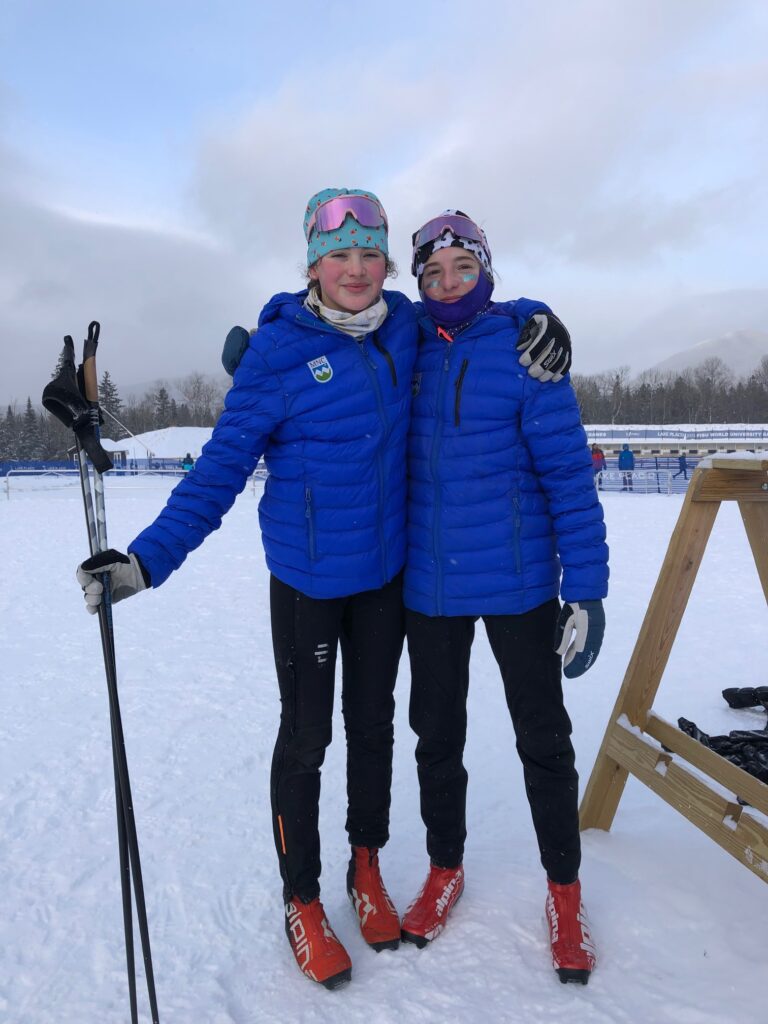
Brooke and Astrid after their sprint heat…can you tell they are a bit tired and chilly 🙂
The U16 men’s race was dominated by a trio of Canadian skiers from the Nakkertok club in Ottawa. Although they tried their hardest to take the American challenge to them, the group of US U16 boys didn’t quite have it on this day. What played out instead was an interesting tactical battle. Jonah stayed relaxed on the first lap, but then when the climbs began on lap 2 and Matthew McIntosh made his move, Jonah tried to follow.
He wasn’t feeling fully healthy though, and was worried coming into the race that a lack of sleep and some aggressive coughing meant he wouldn’t be able to fire on all cylinders. Nevertheless he basically pushed until his body gave out, which unfortunately happened to be about 40 meters from the finish line where everything shut down. A great effort, but one in need of some rest and recovery!
James, on the contrary, had been under the weather for a number of bigger events this year, including Thanksgiving Camp and several races. But he was back to full force this weekend, and skied a great race to stay strong with good technique throughout and fight the whole way. Also joining him was the Devo group of Liam, Oakley, and Isaiah getting in their first Eastern Cup experiences!
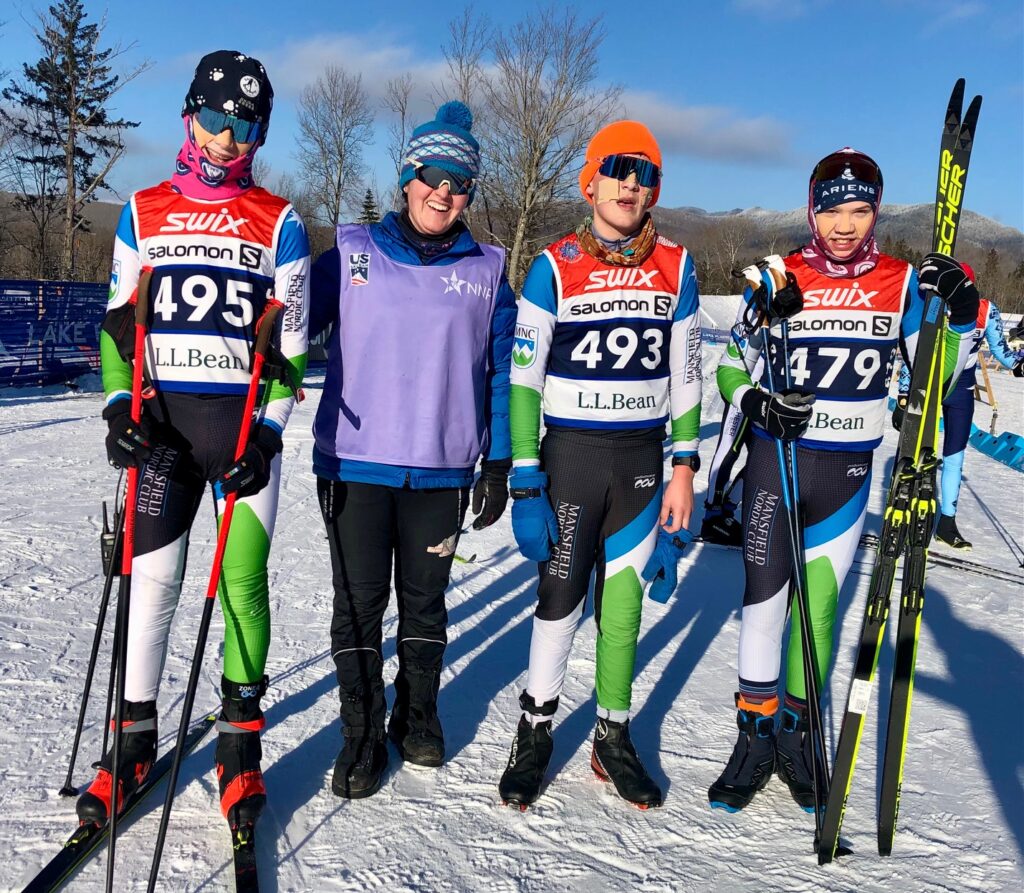
Kristen with a tired-but-content Devo squad after their race
The turnaround is quite fast for Eastern Cup #3 in Craftsbury, with a more relaxed weekend and then a focus straight to the next big event. We are truly in the heart of winter now!
